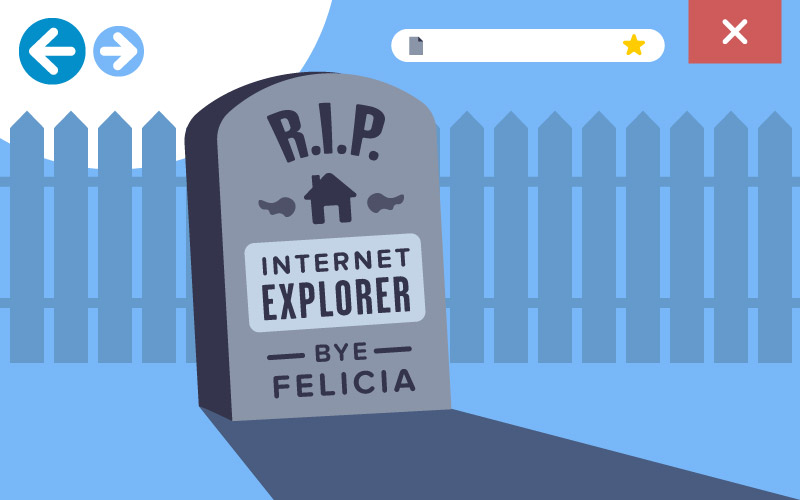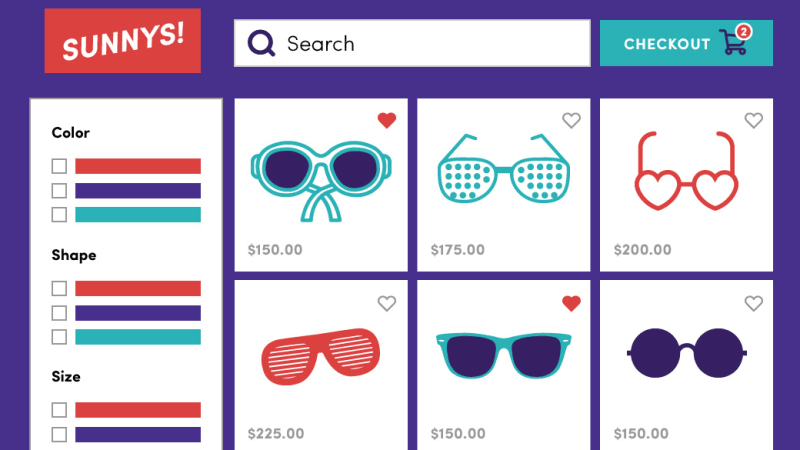Process, Web Development Internet Explorer is Dead.
White Lion — April 13, 2016

On January 12, Microsoft ended support for all versions of Internet Explorer previous to its latest version, 11. This announcement came soon after the software titan released its first new browser in 20 years, Edge, making it the new default browser for its latest operating system, Windows 10. These actions make it quite clear that Microsoft is quickly taking strides to cut all ties with its previous flagship.
This shift at Microsoft has been brewing for quite some time, starting with the release of Windows 8 and Internet Explorer 9, for which the the tagline was, prophetically, “A More Beautiful Web.” (Prophetically, because it was an ideal not realized at the time). However, even as the latest versions of Internet Explorer continued to fall short of that promise, Edge aspires to fulfill it.
To put it bluntly, Internet Explorer is dead. And oh, what a slow, painful and, for many, long-awaited death it has been.
Internet Explorer: The Early Days
Internet Explorer was first released in 1995 as an add-on package for Windows 95, but it rose to prominence after ousting NetScape as the browser of choice during the browser wars of the late 1990s. It gained its peak market share of 95% in 2002 and 2003. At the time, Internet Explorer had the advantage of being the default browser for Windows, the number one operating system. After becoming essentially the only browser (due perhaps to the lack of easily downloadable software packages from the web), Internet Explorer was the standard for anyone who wanted to access the internet.
A Shift in Tides: The Advent of the “Modern Browser”
Enter Mozilla Firefox in 2004, the iPhone and mobile Safari in 2007 and Google Chrome in 2008. With the introduction of newer, faster, more secure browsers as well as the advent of mobile web development, Internet Explorer quickly lost its near-monopolistic hold on the browser market. As these new “modern” browsers grew in popularity and new technology continued to develop, new standards also arose centering on mobility, innovation and a heightened need for security.
During this time, Internet Explorer proved unable to keep up. It was quickly revealed to have many security flaws that left unknowing users vulnerable to any number of malicious hackers. It simultaneously became the bane of most web developers’ existence, as it struggled to adhere to web standards and trends, causing designers and developers to heap unthinkable amounts of time, effort and additional code to force Internet Explorer to work the way they desired. In fact whole code libraries have been developed to simply add features to Internet Explorer that it didn’t have by default. And even after all that additional work, Internet Explorer still often fell short, ultimately leading to a severely downgraded experience for users.
In this ever-shifting landscape of improved technology and heightened user expectations, Internet Explorer failed to meet the market’s needs time and again. It quickly lost share, first to Firefox, and then to Chrome. At the end of 2015, Internet Explorer held only 6.3%, compared to Chrome’s 68% and Firefox’s 19.1% according to w3schools.com. It was clear that something had to change if Microsoft was to regain any ground in the browser market.
Enter Edge.
Edge: The Dawn of a New Era at Microsoft
Now, every person who buys the Windows 10 operating system will get Edge, not Internet Explorer, built-in. With this new browser, Microsoft is repositioning itself in the landscape that it once dominated, this time not as the fatigued old giant, beleaguered by hardships yet still resistant to change, but as the young, lean, savvy, innovative newcomer, looking to make its mark.
Edge is doing this in a few specific ways:
Microsoft claims to have built Edge with security as a top priority. (Read more here about security enhancements in Edge)
Edge has an entirely new layout engine, EdgeHTML, which promises to be standards compliant; this means no more need for endless development hours to wrangle the browser into complying.
Edge boasts a much improved performance over Internet Explorer compared to its competitors; while its not quite as fast as Chrome (compared to most tests) it is a close second.
Other progressive enhancements, such as Cortana (Microsoft’s personal assistant) and Web Note (which provides the ability to draw, scribble and make annotations directly on a web page) are built directly to the browser.
Edge no longer shares the major version release system of Internet Explorer, but instead is updated iteratively, like the other modern browsers. That means, if you are a loyal user, you no longer have to wait till the next major version of the browser for new feature support. Not that you would know if your version changed at all. In fact, with the latest stable release Microsoft Edge is now at version 25.10586.0.0.
Edge: Hero or Hype?
There is still a lot of debate as to whether or not Edge can compete with Chrome and Firefox. Some have already responded with a definitive “yes,” claiming that Edge is already good enough to make the switch. Meanwhile, some are more skeptical, wondering whether Microsoft truly has produced the more secure, more performant, more beautiful web that it claims.
But whether you have already jumped on the Edge bandwagon or you are still holding out, you will find it difficult to dispute that it is a better day at Microsoft and in the web development community in general now that Internet Explorer is (almost) gone. Just keep walking toward the light, Internet Explorer…


